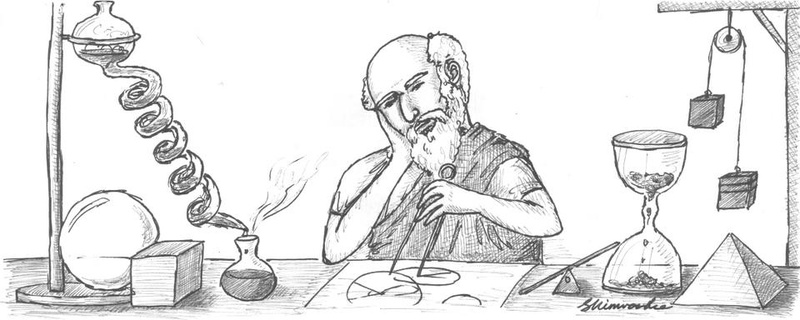The “Heavenly Questions” to which Schnackenberg’s title refers are drawn from a set of Chinese poems called “Tianwen,” which ask a series of unanswerable philosophical questions. Schnackenberg consistently draws from this ancient work throughout her collection; her poems are replete with references to philosophy and the pursuit of beauty. But even as she ponders these questions, Schnackenberg does not attempt to find their answers. Rather, she focuses on the emotional weight of asking the questions themselves.
The collection is composed of six poems, all written in hypnotic, unrhymed iambic pentameter. They are abundant with sensuous imagery as well as some more unexpectedly scientific diction—the Latin name of a nautilus, or a description of the logarithmic spiral of a seashell. As Schnackenberg alternates between the vast environment of the sea and the enclosed space within hospitals, she creates a touching exploration of the idea of eternity.
The death of Gertrude Schnackenberg’s husband, the philosopher Robert Nozick (who passed away in 2002), plays a significant role in her poetry. Some of the poems, such as “Sublimaze” and “Venus Velvet No. 2,” take place in the hospital as Schnackenber sits with her husband, awaiting test results. The vivid language that Schnackenberg uses to describe the hospital brings out the beauty in this bleak setting. In one poem, she evokes an X-ray machine: “Black curtains sewn from bolts of consciousness / are held aside by seraphs in black corners: / a stream of flowing atoms, held aside.” In another, she refers to an elevator shaft as “abolished space.” These descriptions of her dreary surroundings have an almost dreamlike quality, especially in “Sublimaze,” where the hospital reminds her of the uncountable doors of a legendary church.
But even in the midst of these lofty visions, the poet’s meditations always circle back to her loved one’s dire condition: “I reasoned that if someone swept a hand / And all the locks fell open all at once / And if the door fell open, he would live.” This plea underlies all of the poems and is echoed in the simple line: “No questions anymore. Just let him live.” In its simplicity, this sentiment is far more powerful than all of her cerebral questions.
Sleep, death’s gentle cousin, is also a recurring theme in “Heavenly Questions;” two of the six poems, in fact, are presented as lullabies. In one, Archimedes is sitting on the shore of a “half-filled” universe, counting grains of sand as his projects (“discarded toys, forgotten thought-machines”) rust beside him. In another, the shell of a Fusiturricula spirals into infinity as the creature grows beneath the waves. The repetition within the blank verse creates a soothing effect, as in the repeated line: “And all is give-and-take, all comes and goes / And hush now, all is well now, close your eyes.” But Schnackenberg does not allow her repeated images to dominate the poems, instead balancing them alonsgide strange descriptions of war and musings on the sensations of the Fustirricula.
The gentle rhythm of Schnackenberg’s verse and her frequent descriptions of sleep also give some of her other poems the quality of lullabies, even when they are not framed as such. Even the poems that touch on the death of her husband have this same soft tone, and she often repeats the line “hush now, all is well now, close your eyes.”
Schnackenberg’s rhythm and her discussion of eternal questions are both unexpectedly strengthened by her pervasive use of mathematical language in the text. Most of her poems include some element of counting towards infinity: Archimedes multiplies X times X times X grains of sand, the legendary church will always have one more door, and the tip of the nautilus spirals outwards forever. Her most striking language is often threaded with mathematical terms, as when she describes a shell made up of “logarithms visible and fused / With thoughts in rows of spiral beaded cords / As X goes to infinity; impearled.”
Moreover, her use of mathematical language informs most of her musings on the so-called heavenly questions. While Schnackenberg does reference some religion—Buddha and the Mahabharata, for instance—her most powerful images of eternity are those such as the endless sand of Archimedes. It is through her close attention to detail—she even describes the intricate graphite lattices of her number two pencil—that Schnackenberg is able to address the larger questions that she is pondering. In this sense she’s very much like Archimedes counting out grains of sand. The minutia she describes may seem as trivial as grains of sand, but these tiny pieces, she seems to argue, build the universe.
While “Heavenly Questions” does not end with any answers or consolation (the final line is “And here the god of writers broke his pen”), it is a fascinating invocation of the wonders of eternity, and a human relationship to eternal questions. Schnackenberg pursues these wonders on all fronts—in mathematical iterations as well as references to science and philosophy, and it is this integrated approach, along with the sheer density of her imagery, that characterizes her compelling new poetry collection.
Read more in Arts
A Lack of Constructive Criticism













